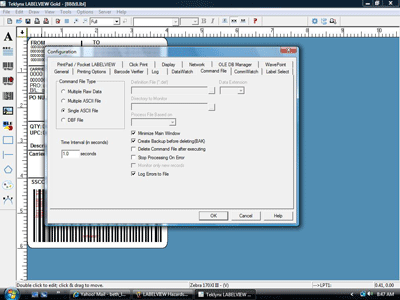
However, notes have been included to explain how information may be provided on cartons and outer cases using a GS1-128 barcode. This guideline mainly addresses logistic labelling.

It is important to note that such labels, when not containing an SSCC, are not considered to be GS1 Logistic Labels. The barcode may be an ITF-14, EAN/UPC, or when additional item data is needed, a GS1-128 barcode.

Trade items such as cartons and outer cases will often have a barcode encoding the Global Trade Item Number (GTIN). 1.2.2 Labelling trade items such as cartons and outer cases Besides the SSCC other information can be included on the GS1 Logistic Label. Using the SSCC to identify individual units provides the opportunity to implement a wide range of applications such as cross docking, shipment routing, and automated receiving. Scanning the SSCC barcode on each logistic unit allows the physical movement of units to be matched with the electronic business messages that refer to them.
Labelview 2015 not installing serial#
The only mandatory requirement is that each logistic unit must be identified with a unique serial number, the Serial Shipping Container Code (SSCC). The GS1 Logistic Label allows users to identify logistic units uniquely so that they can be tracked and traced throughout the supply chain. A logistic unit is an item of any composition established for transport and / or storage which needs to be managed throughout the supply chain. The main topic of this guideline is the labelling of logistic units. It is based on the GS1 Standards described in the GS1 General Specifications, and on best practices gathered in various implementation projects around the world.
Labelview 2015 not installing how to#
This guideline provides guidance on how to physically identify logistic units using the GS1 Logistic Label. GS1 offers a standard to help accomplish this: The GS1 Logistic Label. The often complex logistics flows and the variety of involved parties imply there is a need for easy physical identification of logistic units. T&L processes involve a wide variety of parties such as consignor and consignee, freight forwarders and carriers as well as official bodies like customs and port authorities.

The Transport & Logistics industry involves the movement of goods using multiple transport modes, including road, rail, air and maritime. The GS1 System is the most widely used supply chain standards system in the world and comprises the standards, guidelines, solutions and services created in formalised and collaborative processes.


 0 kommentar(er)
0 kommentar(er)
